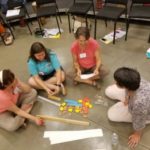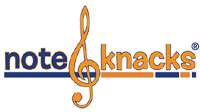 As the upcoming school year gets under way, I have been thinking about what I want to do to shake things up in my classes. I have decided on centers. I have done them in the past to a certain extent, but this year, I want to go full out!! Why not?
As the upcoming school year gets under way, I have been thinking about what I want to do to shake things up in my classes. I have decided on centers. I have done them in the past to a certain extent, but this year, I want to go full out!! Why not?
I looked for resources in the usual places and have to say I was a little disappointed. There is a lot out there that is fun, but not as much with real substance. Of course I want my students to have fun, but I also want them to learn something in a way that empowers them. My goal is to create an environment where they investigate and construct their knowledge. This will build confidence and a joy in what they learn.
For the next few weeks I will be writing about centers from start to finish ~ how I plan them, how they are executed and how well….or not… they go. I am looking forward to the journey!
When I was getting my Masters in Early Ed back in the 90’s, literacy centers were all the rage. We were all excited about “Guided Reading” by Irene Fountas and Gay Su Pinnell and “Whole Language”. As one can imagine, this time made quite an impression on me! Ever since I started teaching music and saw what was out there, I have been obsessed with teaching music literacy in a way that echoed what I learned. As the practice has evolved, so has my understanding of how children learn. I am convinced that the more we look at successful literacy and math teaching methods, the more we will succeed in teaching our young musicians how to be fluent readers and composers ~ and lovers of the art we love so much.
So to kick off this voyage, I will share the very first step I took: my centers outline. These are the centers I am thinking about and will probably need to tweak as I go:
- Listening Center: where kids listen to the music we are working on and complete a relevant task to better understand it
- I am super excited about this center, as I have always wanted to do it! Most, if not all, of the research in our field talks about the importance of listening. Kids need to hear a piece lots of times in order to internalize it and therefore understand it better. I am looking forward to hearing the impact!
- Experiment Center: where kids try out different rhythms and pitches to see what they like or don’t like
- This will be a space where kids can tinker with sound. Before we ask them to commit to a rhythm or phrase, they should have the chance to see as many possibilities as they can think of!
- Reading Center: where kids play, match or recreate what they see
- This is a space where kids will investigate notation. How is it the same? How is it different? How do the lengths relate to each other? What does this have to do with time signature? Does it play into it at all?
- How does pitch play into it? How do we determine pitch? What if we want more than one instrument playing that pitch at the same time? How do we notate that? And so on…
- Games Center: where kids play games to put it all together
- I am not set on this one yet, but I think it could be a lot of fun. I also think it will be where the activities that do not fall into the other categories will fall. We’ll see!
Please share if you have used centers in your room and the activities that were successful for you!

0 Comments